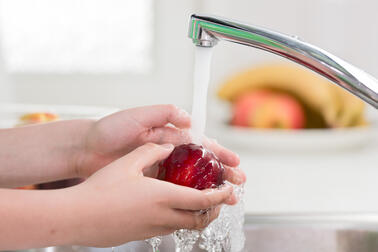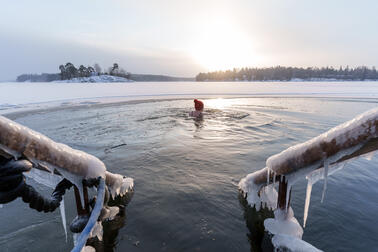
good microbiological quality, and 89% met all of the physical and chemical quality requirements.
There were a total of 56 public pool facilities in Helsinki in 2023. Of them, 12 were in City swimming halls, four in outdoor pools and 40 in other public pool facilities, such as the swimming pools of rehabilitation institutions, hotels, sports centres and schools. The total number of pools in such facilities was 113. A total of 1,314 water samples were analysed, 1,166 of which met all of the quality criteria set for swimming pool water.
Microbiological quality of pool water was very good
Of all samples analysed, 99.2% were of good quality. These samples did not show increased bacterial levels. This is similar to previous results: over 99% of the samples taken in 2021 and 2022 also met the microbiological quality criteria for pool water.
The microbiological water quality of pools is evaluated by determining the heterotrophic plate count at two temperature levels (22°C and 36°C) and analysing the incidence of the Pseudomonas aeruginosa bacteria. The heterotrophic plate count is the total number of microbes that have entered the pool water from swimmers, the environment and the water supply system and have withstood the disinfection measures. There is zero tolerance for thePseudomonas aeruginosa bacteria to appear in the water.
Nine samples exceeded the limits for heterotrophic plate count. Based on the results, the pools were sanitised and treated intensively with chlorine. The repeat samples taken after the sanitation did not show exceeded values.
The Pseudomonas aeruginosa bacteria was present in five samples. However, the bacteria was not found in the repeat samples taken after the pool and the connected facilities were sanitised. P. aeruginosa may cause a rash or an ear infection, among other health issues. In 2023, the Environmental Health Unit investigated one epidemic spread via a pool, the suspected cause of which was the P. aeruginosa bacteria. All pool users were informed of the epidemic analyses. The pool was emptied and sanitised before re-opening it to the public. Epidemics transmitted via pool water are rare, and the Environmental Health Unit is not aware of any in the past few years.
Physical and chemical water quality was good
Of the samples taken, 89% met all of the quality criteria. The most notable causes for the physical and chemical quality deteriorating were deviations in chlorine levels and water opacity. However, most deviations were minor and not harmful to swimmers.
The most consistent water quality was found in City swimming halls: 94% of the samples from them met all of the quality criteria. Similarly, the water quality of rehabilitation facilities was good: 90% of the samples met all of the quality criteria. The most deviations occurred in the pool water of hotels and meeting places: 61% of the samples met all of the quality criteria.
Two in three bad samples came from cold pools that have recently become increasingly popular. The pools often have a small volume of water, and users’ behaviour has a great impact on the pool water quality. When you wash yourself properly before going to the pool, you can efficiently avoid increases in urea levels in the water. The latest results on pool water quality are displayed to visitors at the pool facility or its notice board.


